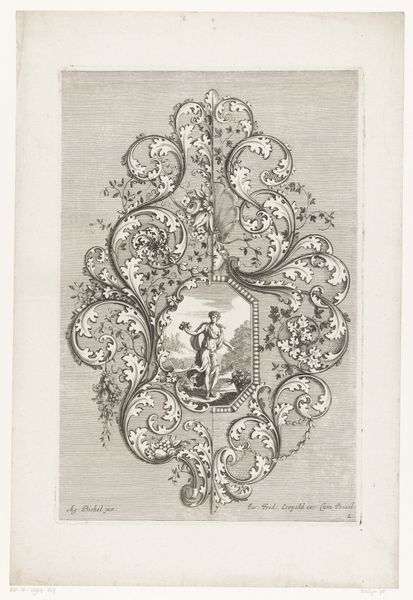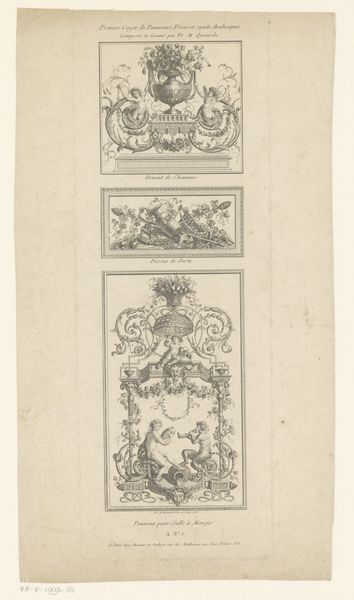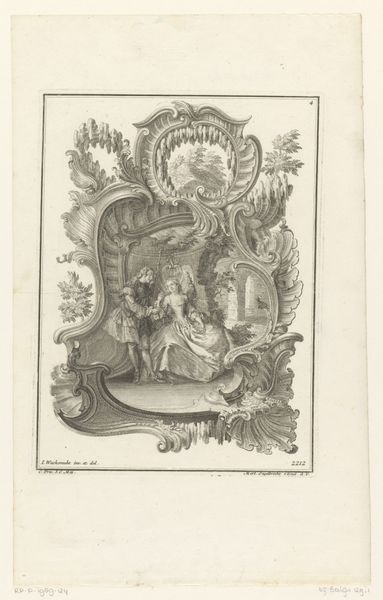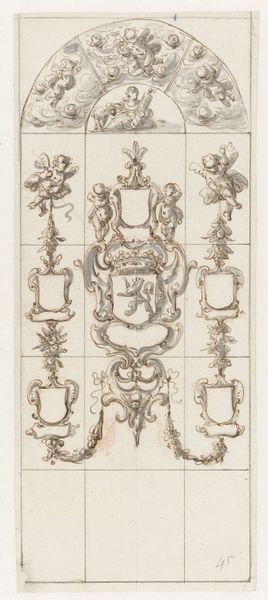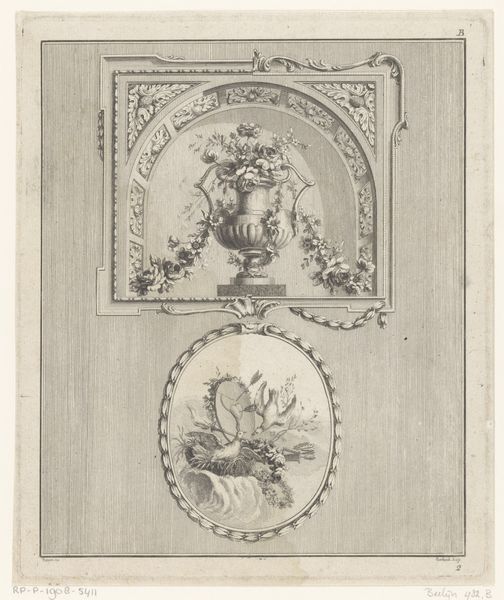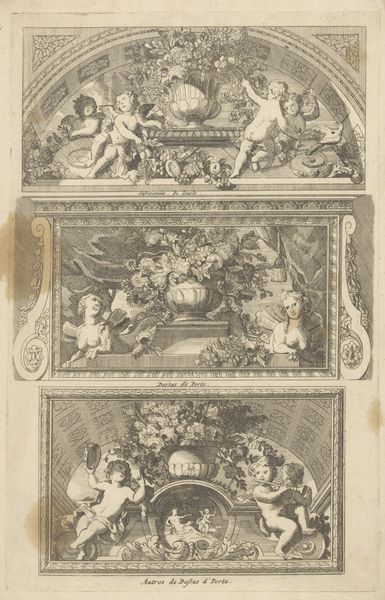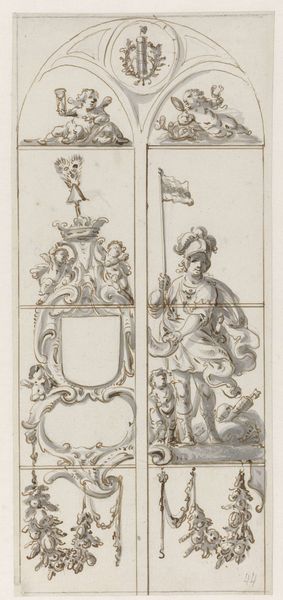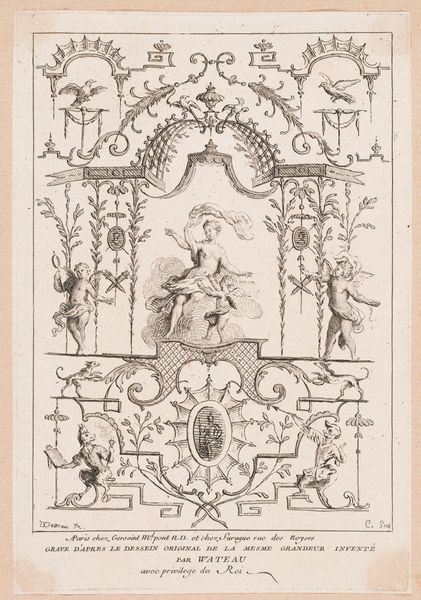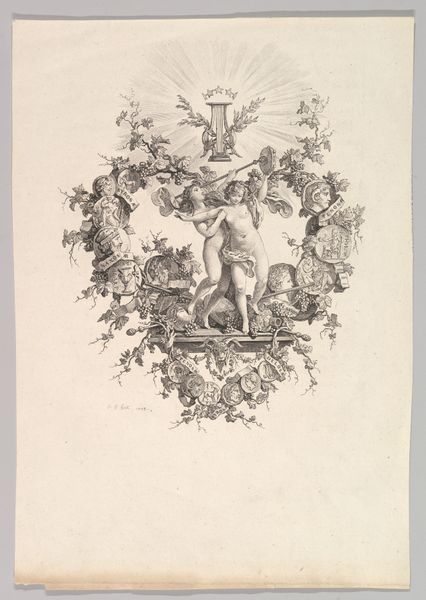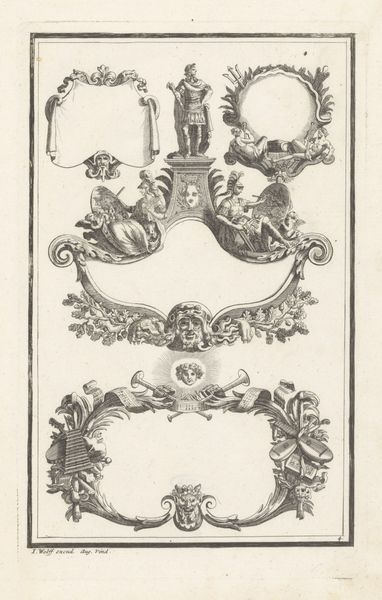
drawing, ink
#
drawing
#
neoclacissism
#
allegory
#
ink
#
history-painting
#
decorative-art
Dimensions: height 299 mm, width 102 mm
Copyright: Rijks Museum: Open Domain
Editor: This drawing, "Arabesk met vaas en halffiguren," from around 1788-1810, is an ink drawing and strikes me as incredibly ornamental. The fantastical creatures feel very removed from lived experience. How do you interpret this work, considering its historical context? Curator: It’s fascinating to consider this drawing, with its Neoclassical motifs, within the broader context of revolutionary upheaval. The arabesque, teeming with hybrid creatures and allegorical figures, served as a deliberate aesthetic retreat from the real-world struggles of the era. It promoted values, and acted as propaganda through aesthetics. Can we see how these choices naturalize class divides, perhaps? Editor: I hadn’t thought of it as propaganda exactly, more just escapism. But I see what you mean about how these ornamental choices re-inscribe privilege. Curator: Exactly! The Neoclassical style itself was consciously referencing a specific history, a particularly hierarchical past. How do the crisp lines and idealized forms contrast with, or perhaps even obscure, the realities of late 18th-century society, think of the looming French Revolution! The emphasis on idealized forms naturalizes existing social hierarchies, which serves political purpose. Editor: That makes me see the piece completely differently! The symmetry and elegance now feel almost complicit, a visual manifestation of societal inequalities. What would you say the purpose of works like this should be for viewers in our current context? Curator: I believe they serve as critical reminders. We need to analyze how aesthetic choices participate in broader social and political systems. Examining this arabesque invites us to confront the historical roots of contemporary inequalities and encourages more critically engaged viewership, even regarding ornamental or seemingly innocent forms. Editor: Thanks, I definitely have a new understanding now of how even purely decorative pieces can reflect broader societal currents and power dynamics.
Comments
No comments
Be the first to comment and join the conversation on the ultimate creative platform.
